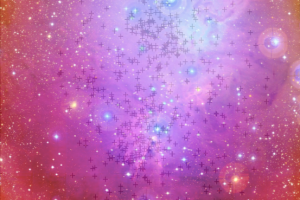Two large projects (GES and CSI-2264) join forces: The study “The Gaia-ESO Survey and CSI 2264: Substructures, disks, and sequential star formation in the young open cluster NGC 2264” of L. Venuti (INAF-OAPA) recently published by A&A

The study of star-forming regions of our Galaxy is one of the main research topic of the Astronomical Observatory of Palermo. This because they can provide crucial information on how large molecular clouds collapse and form stars, on the early stellar evolutionary stages, on the formation of planetary systems, the formation and dispersion of protoplanetary disks, and the history and evolution of our Galaxy, etc..
However, star forming regions can be hard to observe and analyze. Their stellar population, in fact, typically younger than 10 million years, can be hardly identified and distinguished from foreground and background stars. Besides, these regions can host dense clouds that can obscure embedded young stars.
For these reasons, star forming regions are often targets of ambitious international projects involving deep observations even with large set of telescopes. Two projects of this kind involving the Astronomical Observatory of Palermo are the Gaia-ESO Project (GES), with more than 100000 stars observed with the Fibre Large Array Multi Element Spectrograph (FLAMES) of the European Southern Observatory in more than 300 nights, and the Coordinated Synoptic Investigation of NGC 2264 (CSI-2264), that involved more than 15 telescopes which observed simultaneously the region NGC 2264
NGC 2264 has been targeted both by CSI-2264 and GES, providing a unique chance of selecting the stellar population of this region and study its properties in great details. GES spectra, in fact, allow us the selection of stars actively accreting gas from their protoplanetary disks, young stars whose spectra still present the Li I 6708 Å absorption line (Lithium is quickly consumed in stellar interior and thus not observed in stars older than few million years), and also to obtain stellar gravity (lower in pre-main sequence stars than in main sequence) and effective temperature. CSI-2264 observations allow the identification of stars with disks both with and without ongoing accretion, by means of the study of their variability and the analysis of available optical and infrared photometric observations.
The study “The Gaia-ESO Survey and CSI 2264: Substructures, disks, and sequential star formation in the young open cluster NGC 2264” of L. Venuti (INAF – Astronomical Observatory of Palermo), analyzes GES and CSI data of 655 stars associated with NGC 2264, whose mass ranges between 0.2 and 1.8 solar masses, in order to obtain a complete view of the star formation process occurred in this region. It has been observed that star formation in NGC 2264 started about 5 million years in the northern region, around the O star S Mon, and then it has continued until nowadays. Active star forming sites have been identified, in fact, in the southern region around the Cone Nebula. Other important results are: actively accreting stars are on average younger than non accreting stars with disks, supporting the finding that timescale of gas accretion from protoplanetary disks onto the central star are few million years shorter than disks dissipation timescale; and the evidence that stars with disks around S Mon are on average younger than those in the other regions, supporting the destructive feedback provided by O stars on nearby protoplanetary disks and the planets formation process.
The figure (link) shows an image of NGC 2264 and the Cone Nebula in ugr bands taken with the Canadian- France Hawaii Telescope. Crosses mark the position of the source analyzed in this work.
